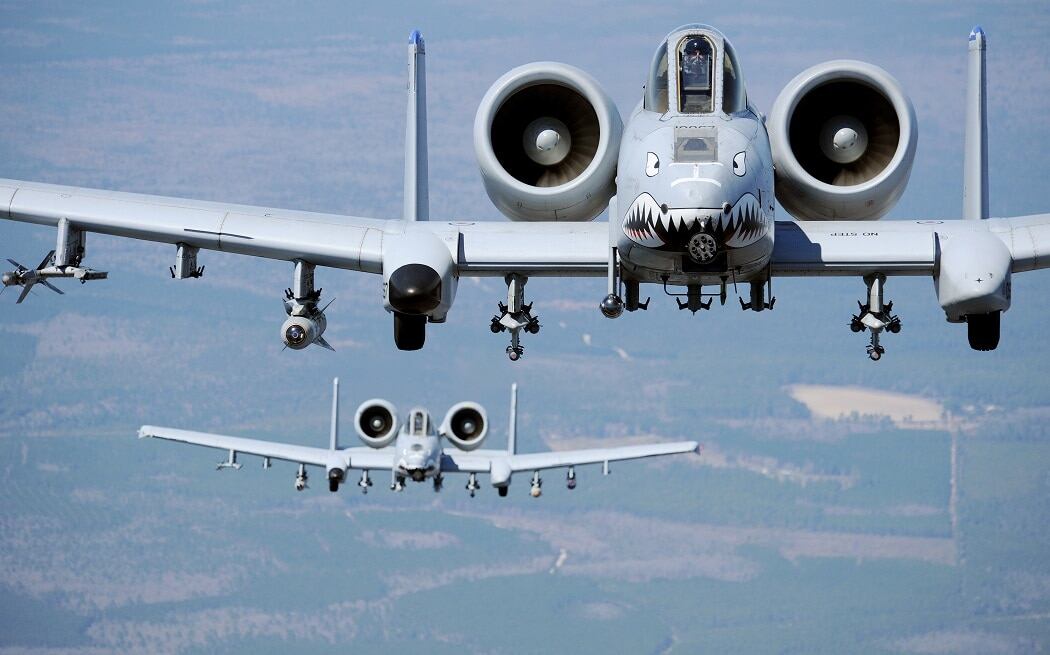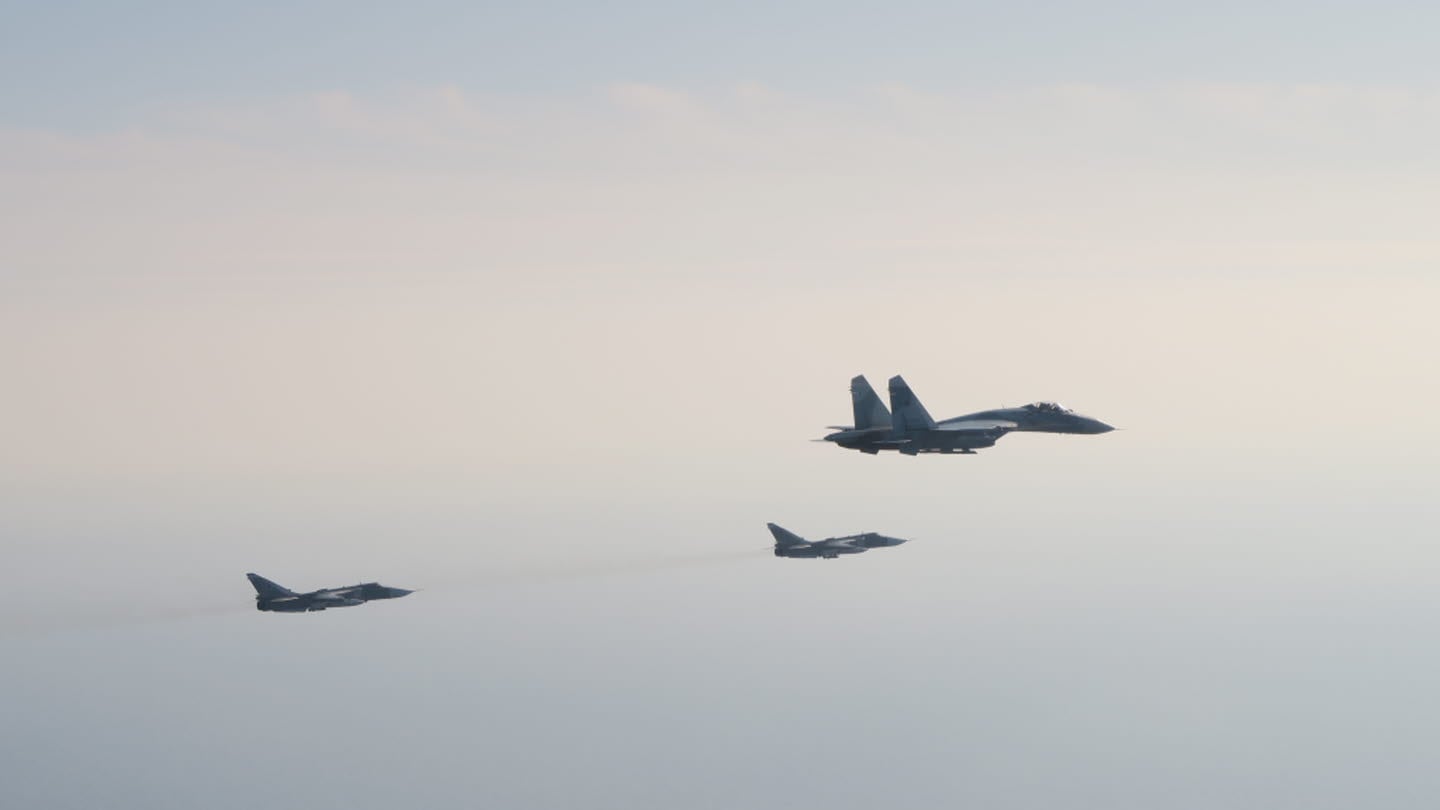Editor’s note: This story was updated March 29 at 3:30 p.m. to clarify inconsistencies in data provided by the Office of the Secretary of Defense and the Department of the Air Force.
The Air Force plans to cut nearly 6,000 military billets in fiscal 2023 as it looks to retire more of its mainstay combat aircraft, according to the Biden administration’s new budget request released Monday. But it is unclear how many airmen could be out of a job as a result.
“We’re basically taking some end strength out associated with the divestments” proposed for 269 airframes in fleets like the T-1 training aircraft, F-22 fighter jets and E-3 airborne target tracking planes, Air Force Secretary Frank Kendall told reporters in a March 25 preview. The Air Force said those retirements are a mix of newly suggested and previously authorized moves.
Those positions largely belong to airmen whose airframes may leave the inventory, though troops can be reassigned to other billets as needed. The number of jobs that are filled at one time changes throughout the year as people join and depart the service. The Air Force can shrink by attrition, not mandatory separation, by opting not to replace airmen who leave, Kendall said.
RELATED

In total, the Department of the Air Force is asking Congress to fund 657,773 billets across active duty Air Force and Space Force, Air National Guard and Air Force Reserve troops and its civilian workforce. The service plans to shrink the number of military positions from the 516,220 billets that lawmakers authorized for 2022 to 510,400 in 2023, and grow the civilian side from about 145,000 jobs to nearly 147,400.
It requests 323,400 positions for active duty airmen and 8,600 for active duty guardians. Of the 4,900 active duty Air Force jobs that would disappear, about 2,000 are slated to return to the Defense Health Agency after temporarily becoming part of the Air Force. The Air National Guard and Air Force Reserve would remain essentially flat at 108,400 and 70,000 billets, respectively.
Congress approves funding for a certain number of jobs each year; those do not change even while airmen and guardians come and go. For example, as of Monday, the Air Force Personnel Center said it employed around 329,000 active duty airmen, about the same as funded positions for 2022.
Fiscal 2023 budget charts presented by the Office of the Secretary of Defense on Monday estimated the Air Force will have about 323,300 active duty airmen when the year begins Oct. 1.
Unusually high retention during the coronavirus pandemic has spurred the Air Force to offer early exits for military personnel, so as not to employ more people than it has positions. The administration’s proposal signals that the Air Force has succeeded in downsizing from nearly 335,000 people who were on active duty as of December 2020.
The Space Force, on the other hand, is trying to add 200 jobs to grow to 8,600 active duty guardians.
About half of those are part of the Space Development Agency’s move from under the Office of the Secretary of Defense to formally join the Space Force. Another 100 or so are for soldiers, sailors and Marines who were chosen to transfer into the newest military branch, Maj. Gen. James Peccia, the Air Force’s deputy assistant budget secretary, told reporters.
The Department of the Air Force’s total military manpower request is nearly the same as it was a decade earlier in fiscal 2012, when the Obama administration asked for 510,900 billets amid the U.S. withdrawal from Iraq.
Now the Pentagon is in a similar position, having brought troops home from the two-decade war in Afghanistan while trying to refocus its efforts on military and economic competition with China and to fend off an emboldened Russia.
As part of its $169.5 billion budget request for the fiscal year starting Oct. 1, the Air Force wants $68.1 billion for operations and maintenance, $39.4 billion for military personnel, $33.4 billion for research and development, $25.7 billion for procurement and $3 billion for military construction.
Kendall noted that while Russia’s buildup at the Ukrainian border ahead of its February invasion did influence the Pentagon’s 2023 budget request, the Air Force will continue rethinking its posture in Europe over the next several months.
RELATED

Officials told reporters they hope to secure funds for 1.1 million flying hours next year, which they said is the most the service can handle. That plan wasn’t affected by last year’s Afghanistan withdrawal, the ongoing war in Ukraine and other global security events, because future flying hour needs are set two years in advance, Air Force spokesperson Ann Stefanek told Air Force Times Monday.
“We execute all of our real world operations out of existing [Air Force] funds, which includes resourcing for both routine peacetime daily training as well as deployed wartime operations,” she said. “Should current operations require additional funding in execution, we would look to support from Congress for supplemental funding.”
The Pentagon’s readiness for air warfare is limited by how much time and money it has to train pilots and crews, the maintenance resources available to keep aging planes in the air and other similar factors.
“As always, the Air Force will respond as required to meet our national objectives, and continues to work aggressively to maintain readiness today even as we modernize for the future,” Stefanek said.
Among its top-priority initiatives, it hopes to secure nearly $100 million that would bolster its posture in the Indo-Pacific. Namely, the funds could further the service’s ability to head out on last-minute deployments in remote areas without much support, a concept known as agile combat employment.
For those in uniform, the Air Force is calling for $154 million to address domestic violence and sexual assault, $16 million for initiatives to diversify its pilot corps and $300,000 to kickstart a “basic needs allowance” fund for airmen and guardians who are financially struggling.
The service also wants to put $520 million toward bonuses and retention programs spanning about 30,000 military jobs, as well as to offer a 4.6% pay raise for civilian employees and to enact a minimum wage of $15 per hour.
“The [Department of the Air Force] has worked hard to create a force of airmen and guardians with the right mix of skills to meet the mission requirements today and address future pacing challenges,” Stefanek said. “We’ll continue to manage our personnel programs thoughtfully and deliberately, recognizing that people are our most valuable resource.”
Asked whether the Air Force anticipates having to reshuffle airmen into undermanned career fields, Stefanek said the service will consider that in the future as needed.
“Should it become necessary to do so, we have a number of pre-existing mechanisms to best retrain and effectively employ our talented airmen to meet current and future mission requirements,” she said.
Rachel Cohen is the editor of Air Force Times. She joined the publication as its senior reporter in March 2021. Her work has appeared in the Washington Post, the Frederick News-Post (Md.), Air and Space Forces Magazine, Inside Defense, Inside Health Policy and elsewhere.








